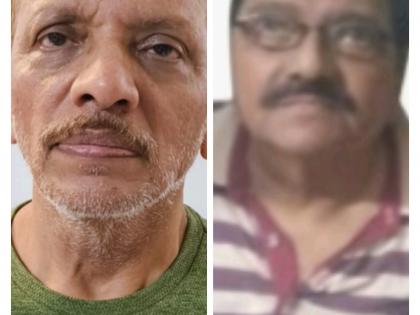Spy Ring Exposed: Brothers Forged Fake BARC ‘Bomb Maps’ Using US, Russian Nuclear Research
By vishal.singh | Updated: October 31, 2025 00:36 IST2025-10-31T00:23:22+5:302025-10-31T00:36:26+5:30
A chilling, decades-long espionage operation run by the Husaini brothers has been unearthed, revealing a highly sophisticated family-run fraud ...

Spy Ring Exposed: Brothers Forged Fake BARC ‘Bomb Maps’ Using US, Russian Nuclear Research
A chilling, decades-long espionage operation run by the Husaini brothers has been unearthed, revealing a highly sophisticated family-run fraud network that produced and sold forged nuclear documents based on specialised international scientific research.
At the centre of the probe is Akhtar Hussain Kutubuddin Ahmed (60), who operated under the alias “Alexander Palmer” and claimed to be a BARC scientist, and his recently arrested brother Adil Husaini. According to officials from the Mumbai Crime Branch, Delhi Police Special Cell and central agencies, the duo systematically acquired highly technical civilian nuclear physics journals and research reports from the United States and Russia, then used diagrams, technical data and maps from those publications to create deceptively authentic-looking documents.
Investigators say the publications seized from the brothers’ residences are not commonly available to the general public and formed the backbone of their operation. The pair reportedly studied specialist titles such as US-based Physical Review C and technical reports from laboratories like Los Alamos, while from Russia they referenced publications including Atomnaya Energiya and Yadernaya Fizika (Physics of Atomic Nuclei). Using material from these sources, the brothers extracted technical diagrams and data and reworked them into fabricated documents that bore an official-looking BARC seal and forged identity cards—one of which Akhtar allegedly used under the name “Ali Raza Husaini.” Officials say the fake BARC IDs were so convincing it was difficult to distinguish them from genuine credentials.
The scam operated internationally. Akhtar is alleged to have maintained the “Alexander Palmer” persona for more than two decades, supported by multiple forged academic degrees and three Indian passports under false names that facilitated the brothers’ travels. Agencies say the duo travelled abroad more than 30 times, using fake passports to visit countries including Iran and the UAE. Sources revealed that the brothers first made online contact with foreign scientists and, after a series of discussions, one or both would travel overseas to meet them. There, they presented documents stamped with the BARC seal and received payment for the material — transactions that, according to officials, netted the pair crores of rupees.
Evidence recovered so far goes beyond routine fraud. Officials report the seizure from Akhtar’s Versova residence of documents purporting to be related to a nuclear bomb and 14 maps, the arrest of Adil and financial trails pointing to large-scale illicit earnings. The brothers had reportedly used a common address in Jamshedpur to obtain forged travel documents, indicating a wider family operation. While Akhtar had faced similar allegations in 2004 in Dubai—later downgraded to forgery—current investigations in Meerut and the discovery of “highly objectionable images” on his phone have sharpened the probe into organised espionage and deception.
Agencies are now probing whether the Husaini operation extended further, and officials have not ruled out the possibility that forged material could have been supplied to foreign terrorist or criminal networks. The central question for investigators is how two men operating such a dangerous and methodical scheme managed to elude counterintelligence scrutiny for more than twenty years.
Open in app